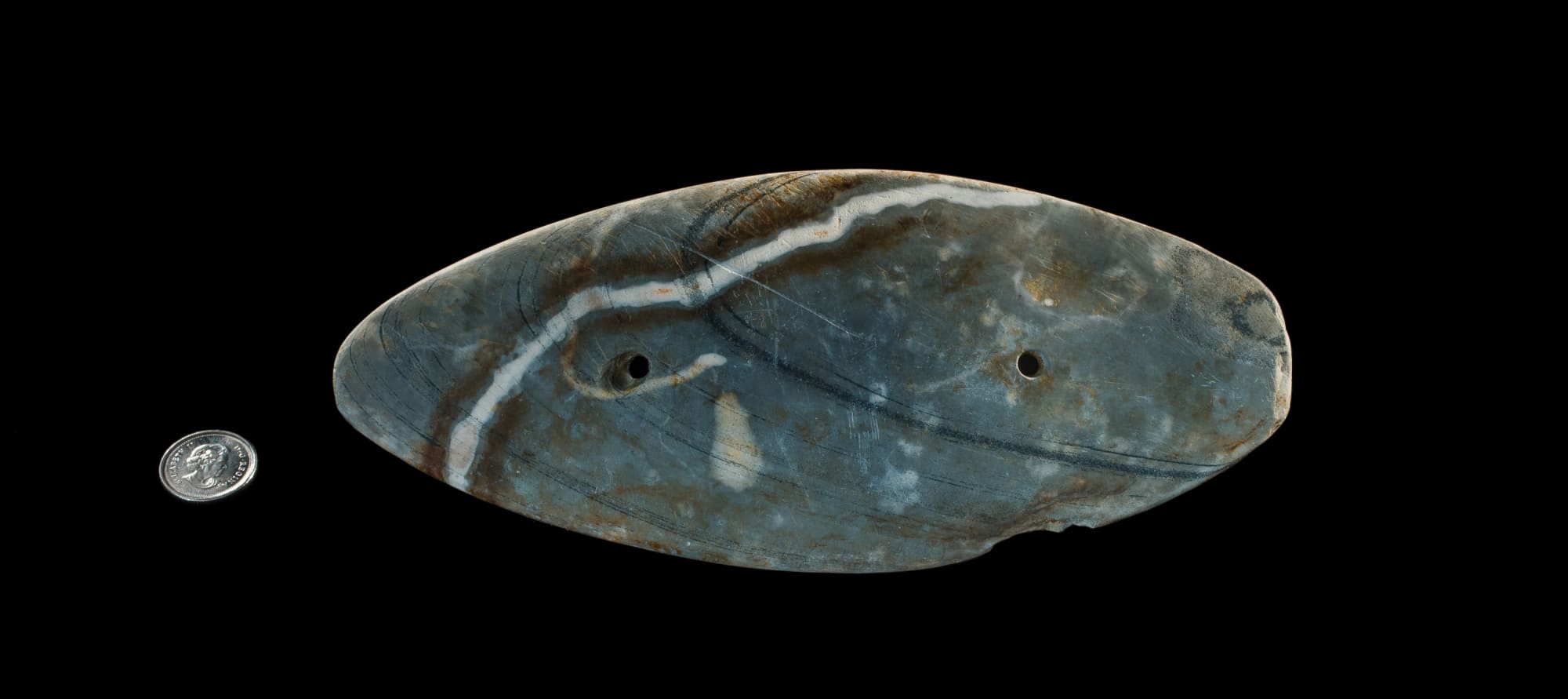Bannerstones 004.99.2796 & 004.99.230 and Gorget 004.99.297
Archaeologists have a bad history of naming classes of artifacts, such as these so-called "bannerstones," based on first impressions or associations with familiar artifacts that may have nothing at all to do with the superficially similar archaeological specimens. Bannerstones are one of the most mysterious Indigenous ground-stone artifact categories because they fell out of use thousands of years ago and have no apparent modern analogue. They are also one of the most aesthetically beautiful artifact classes, having been fabricated from a variety of exquisitely coloured and patterned stone materials. The examples here are made of beautifully banded slate. The crescent-shaped one had a shaft drilled longitudinally through the thicker central area. It subsequently split along this shaft. The banana-shaped one appears to be a preform, as it lacks the typical drilled shaft.
Of the many prevailing theories about their use, one of the most compelling is that they were stylized components of atlatls (spear throwers). Evidence to support this hypothesis comes from archaeological examples that were found in association with atlatl handles and hooks. It is suggested that they served as weights to improve the throwing dynamics of the weapon system, and much research has been done on the physics of reconstructed atlatls to support this idea. Nevertheless, some bannerstones, like these examples, were clearly much too large and elaborate to have been functional in this way.
If you look around your house, you will probably find things that are particularly decorative and only used on special occasions, or not at all. Many of these will have a less fancy counterpart that gets used frequently. This raises the perennial question, when does craft become art? Are some bannerstones functional and some symbolic or ritual art? What was the cultural context of their various uses? Were there craft specialists who made some of these? Since they are found throughout eastern North America, were they valued as trade items? Are there regional styles? Bannerstones remain one of the intriguing mysteries of the archaeological record! What do you think?
As equally mysterious, and as inappropriately named by archaeologists, gorgets (gor-juhts) are another category of ground stone artifact for which there is no apparent modern analogue. They did, however, remind an earlier generation of archaeologists of the metal neck protectors worn by certain military officers during the eighteenth century. As these, in turn, were stylistic descendants of larger pieces of armour, it seems highly unlikely that the Indigenous stone objects had any analogous function or developmental history. Some have suggested that these, too, were stylized atlatl weights. The specimen shown here is made of banded slate. The holes were drilled bi-directionally, i.e. from each side meeting in the middle, giving the holes an hour-glass cross section.


